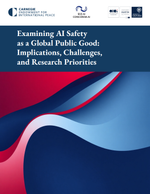Cell
Ben Jackson, Maciej F. Boni, Matthew J. Bull, Amy Colleran, Rachel M. Colquhoun, Alistair C. Darby, Sam Haldenby, Verity Hill, Anita Lucaci, John T. McCrone, Samuel M. Nicholls, Áine O’Toole, Nicole Pacchiarini, Radoslaw Poplawski, Emily Scher, Flora Todd, Hermione J. Webster, Mark Whitehead & Andrew Rambaut
View Journal Article / Working PaperWe present evidence for multiple independent origins of recombinant SARS-CoV-2 viruses sampled from late 2020 and early 2021 in the United Kingdom. Their genomes carry single-nucleotide polymorphisms and deletions that are characteristic of the B.1.1.7 variant of concern but lack the full complement of lineage-defining mutations. Instead, the remainder of their genomes share contiguous genetic variation with non-B.1.1.7 viruses circulating in the same geographic area at the same time as the recombinants. In four instances, there was evidence for onward transmission of a recombinant-origin virus, including one transmission cluster of 45 sequenced cases over the course of 2 months. The inferred genomic locations of recombination breakpoints suggest that every community-transmitted recombinant virus inherited its spike region from a B.1.1.7 parental virus, consistent with a transmission advantage for B.1.1.7’s set of mutations.




